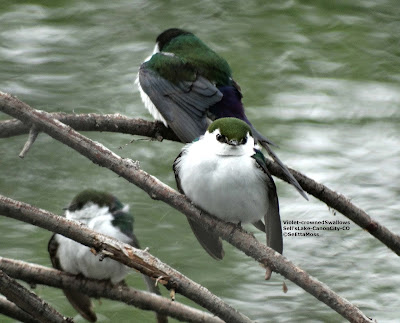Yellow-bellied Sapsuckers return for winter
 Yellow-bellied Sapsuckers, a woodpecker usually found in the eastern United States, have been wintering in Canon City every year since November, 2003. They have also wintered in Pueblo for a number of years beginning before this. Subsequently they have been found wintering at the Lakeside Cemetery and Centennial Park most years, and in a few other locations in the Canon City area occasionally. Most members of this species migrate south to the southeastern quarter of the United States, southward to Panama and the West Indies in the winter with females generally migrating further south.
Yellow-bellied Sapsuckers, a woodpecker usually found in the eastern United States, have been wintering in Canon City every year since November, 2003. They have also wintered in Pueblo for a number of years beginning before this. Subsequently they have been found wintering at the Lakeside Cemetery and Centennial Park most years, and in a few other locations in the Canon City area occasionally. Most members of this species migrate south to the southeastern quarter of the United States, southward to Panama and the West Indies in the winter with females generally migrating further south.
The top pic shows most of the field marks for this species: relatively narrow black stripes on head; complete black border framing the throat; broad white stripe crossing upper part of nape; large white wing patch; red forehead and crown with black border; black bib on upper breast; and extensive white barring on back. Females like this bird have all white throats. The middle pic provides a less commonly seen underside of this species. The bottom pic shows the upperside of their tail feathers. Pics can be enlarge for close-up views by double-clicking on them.

Sapsuckers drill holes, called "sap wells", in trees to drink sap and to eat the cambium of the tree. They also eat arthropods (a group made up of insects, arachnids, and crustaceans) and some fruit. In Canon City I find most sap wells in pine trees, especially Scots pine which appears to be a favorite of not only Yellow-bellied but also Red-naped and Williamsons Sapsuckers which also winter here. SeEtta


Comments